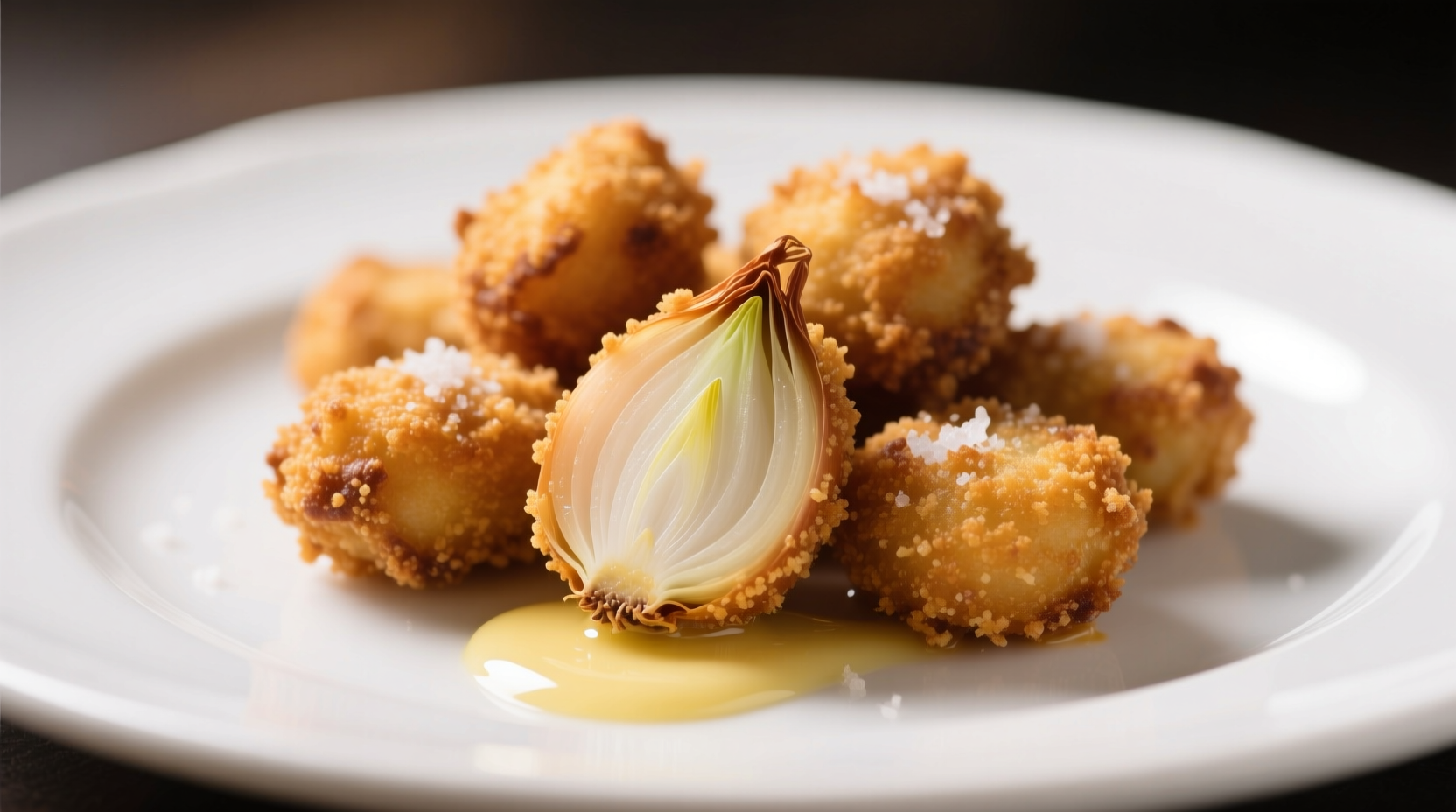Discover everything you need to know about onion nuggets - from their practical advantages over traditional onion rings to foolproof preparation methods that guarantee crispy, flavorful results every time. This comprehensive guide reveals professional techniques for achieving perfect texture, optimal flavor balance, and creative serving options that will transform your approach to this often-overlooked delicacy.
What Exactly Are Onion Nuggets?
Onion nuggets represent a clever culinary solution to utilizing the smaller, irregular pieces of onions that remain after cutting standard rings from larger varieties. While onion rings use uniform circular slices from large sweet onions like Vidalia or Walla Walla, onion nuggets capitalize on the flavorful scraps - the inner cores, smaller end pieces, and irregular sections that would otherwise be discarded.
According to culinary research from the University of California's Agriculture and Natural Resources department, approximately 30% of a standard onion becomes waste when preparing traditional rings. Onion nuggets effectively repurpose this material into a desirable menu item with distinct advantages.
| Feature | Onion Nuggets | Traditional Onion Rings |
|---|---|---|
| Onion Type | Any variety, often smaller onions | Large sweet onions (Vidalia, Walla Walla) |
| Shape | Irregular bite-sized pieces | Uniform circular rings |
| Flavor Concentration | Higher (more core material) | Milder (more outer layers) |
| Waste Reduction | Minimal (uses scraps) | Significant (30% waste) |
| Eating Convenience | Easy finger food | Requires cutting |
The Evolution of Onion Preparations
Understanding the historical context helps appreciate why onion nuggets have gained popularity. The timeline below shows how onion preparations have evolved to maximize flavor and minimize waste:
- 1920s-1940s: Traditional onion rings emerge as a popular diner food, using only the outer rings of large sweet onions
- 1950s-1970s: Restaurants begin experimenting with battered onion pieces, often called "onion bits" or "crispy onions"
- 1980s-1990s: Commercial food manufacturers develop consistent sizing for "onion straws" and "onion strings"
- 2000s-Present: Sustainability movement drives "root-to-stem" cooking, popularizing "onion nuggets" as a waste-reducing alternative
Mastering the Perfect Onion Nuggets Recipe
Creating exceptional onion nuggets requires understanding the science behind the batter and frying process. Professional kitchens follow these critical steps that home cooks can easily replicate:
Ingredient Selection Matters
While many recipes suggest using only one onion variety, experienced chefs like Antonio Rodriguez recommend blending sweet and pungent onions for balanced flavor. Combine 60% sweet onion (Vidalia or Maui) with 40% yellow onion for optimal taste - sweet enough to be approachable but with enough bite to satisfy onion enthusiasts.

The Professional Batter Technique
The secret to restaurant-quality onion nuggets lies in the batter preparation method. Follow these steps for guaranteed crispiness:
- Chill your batter ingredients - cold batter creates a crispier crust when hitting hot oil
- Mix dry ingredients separately from wet ingredients
- Combine just before use - overmixing develops gluten which leads to tough nuggets
- Add 1 tablespoon cornstarch per cup of flour for extra crispness
- Maintain oil temperature at 350°F (175°C) using a thermometer
Avoiding Common Preparation Mistakes
Many home cooks encounter these issues when making onion nuggets. Here's how to solve them:
- Nuggets falling apart: Ensure onions are thoroughly patted dry before battering - excess moisture prevents adhesion
- Soggy texture: Fry in small batches to maintain oil temperature; overcrowding lowers the temperature
- Bland flavor: Add 1 teaspoon onion powder to the batter for intensified onion taste
- Uneven cooking: Cut pieces to uniform 1-inch size for consistent results
Nutritional Profile and Health Considerations
While often viewed as a indulgent treat, onion nuggets offer some nutritional benefits when prepared thoughtfully. The table below compares standard preparation methods:
| Preparation Method | Calories (per 3oz) | Carbohydrates | Protein | Notable Nutrients |
|---|---|---|---|---|
| Deep-fried traditional | 320 | 38g | 5g | Vitamin C, B vitamins, antioxidants |
| Air-fried (minimal oil) | 180 | 28g | 4g | Higher nutrient retention |
| Oven-baked (no oil) | 120 | 25g | 3g | Maximum nutrient preservation |
Research from the USDA Agricultural Research Service confirms that onions retain significant nutritional value even after cooking, particularly quercetin - a powerful antioxidant with anti-inflammatory properties. The key is avoiding excessive oil absorption during frying.
Creative Serving Suggestions Beyond the Ordinary
Move beyond basic dipping sauces with these professional presentation ideas that elevate onion nuggets from simple snack to memorable dish:
- Gourmet topping bar: Offer multiple dipping options including chipotle aioli, truffle ranch, and honey mustard
- Salad enhancement: Sprinkle cooled nuggets over green salads for unexpected crunch
- Sandwich upgrade: Replace traditional onion rings on burgers for better flavor distribution
- Appetizer transformation: Serve with blue cheese dip and apple slices for a sophisticated starter
Storage and Reheating for Perfect Texture
Proper storage techniques maintain quality when you have leftovers. Follow these professional methods:
- Cool completely on wire rack before storing to prevent steam from creating sogginess
- Store in airtight container with paper towel to absorb excess moisture
- Reheat in air fryer at 375°F for 3-4 minutes for best results
- Avoid microwave reheating which creates rubbery texture











 浙公网安备
33010002000092号
浙公网安备
33010002000092号 浙B2-20120091-4
浙B2-20120091-4